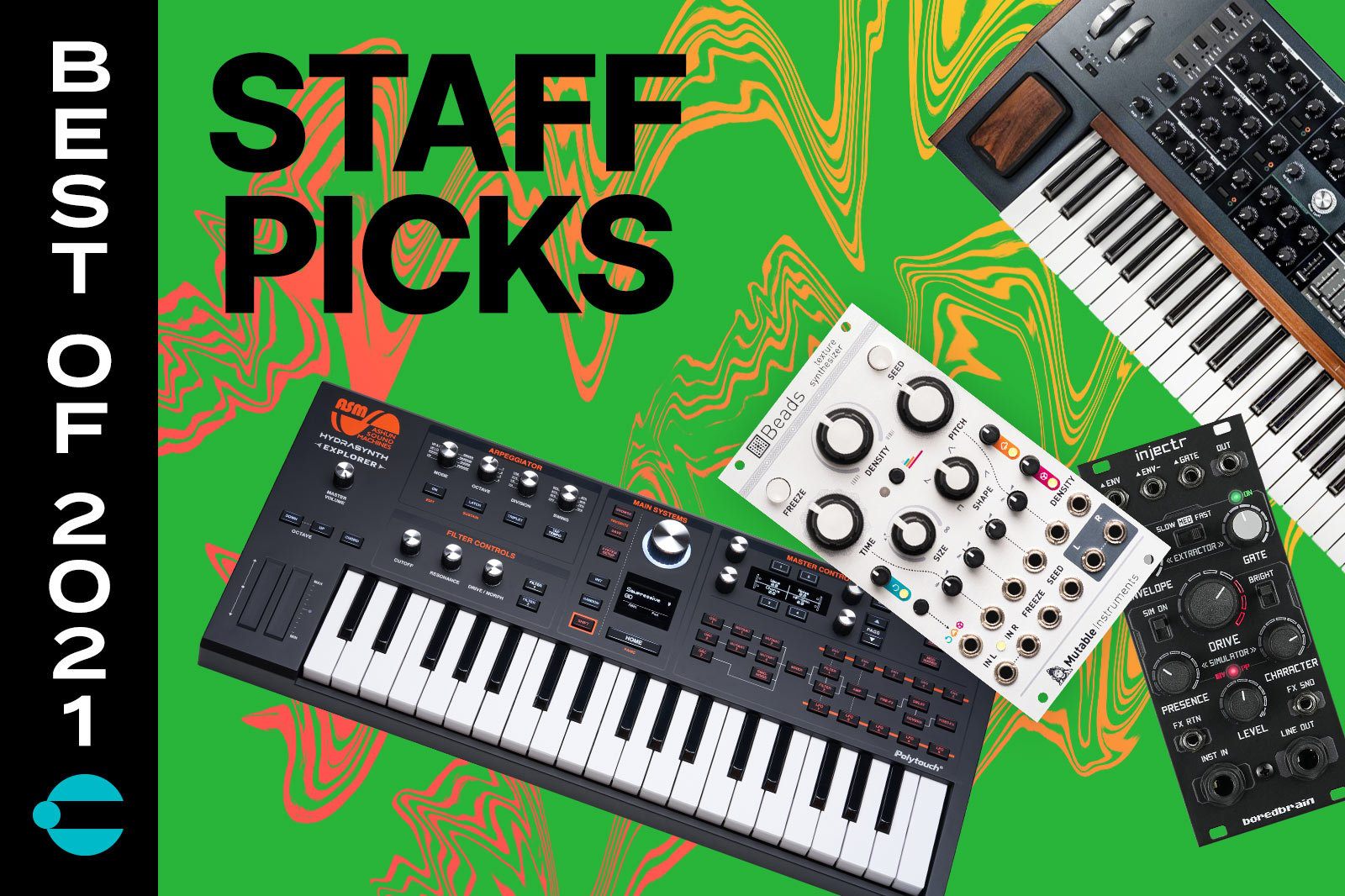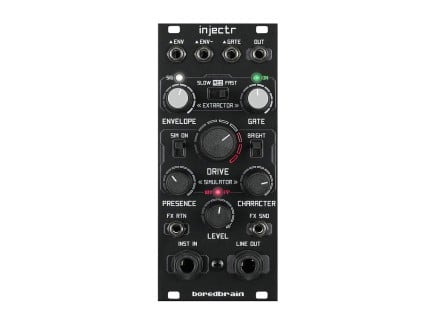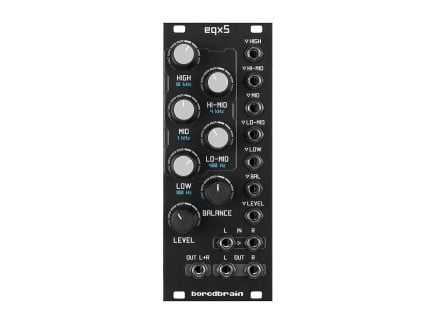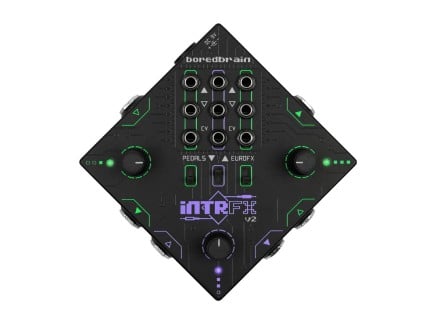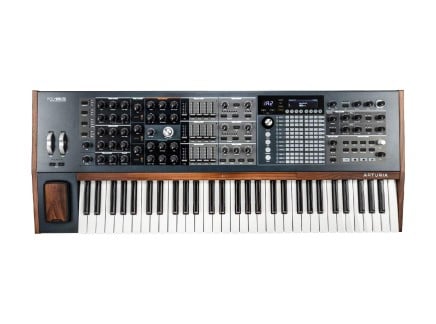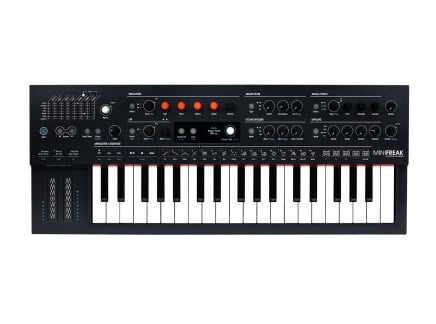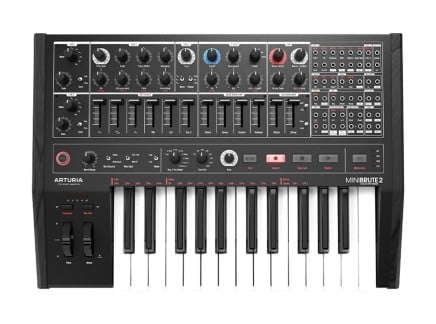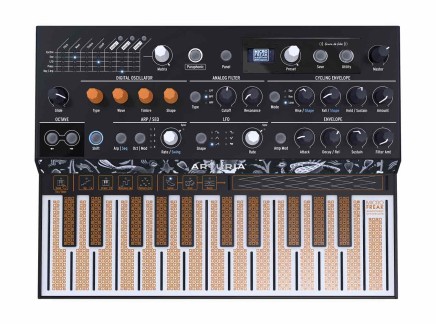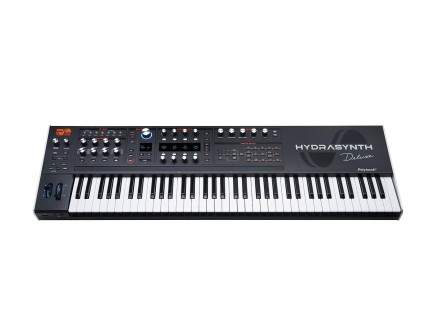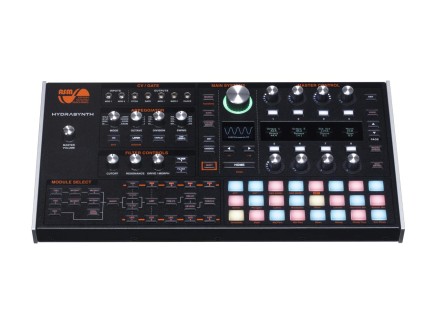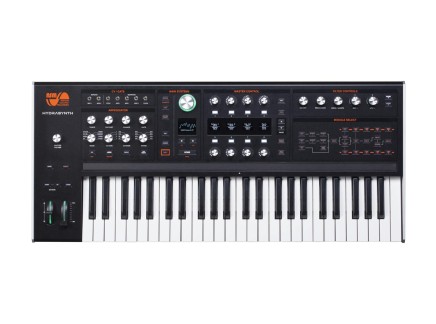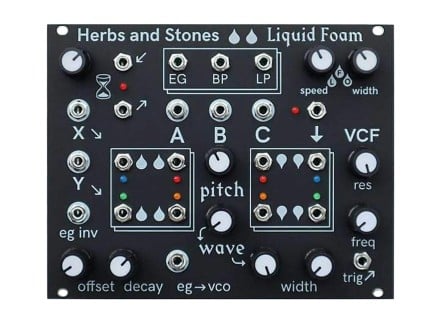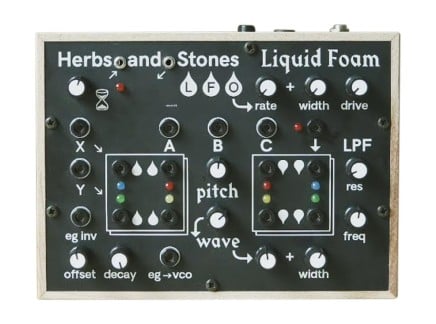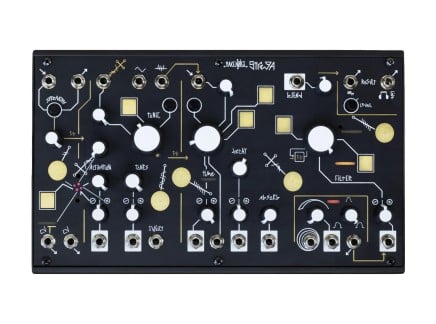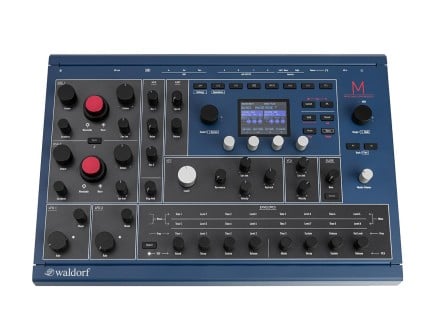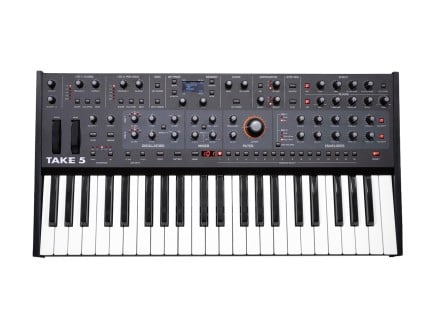As we begin our approach to a new year, we've been reminiscing about 2021—and of course, that has led us to ask the big questions: what were our favorite synths from 2021? What about our favorite Eurorack modules? Pedals? Recording gear? As such, we're starting a series of articles and videos that tackle this topic from a few different perspectives.
Today we're talking among Perfect Circuit staff about our favorite synths and modular gear from 2021—but soon, we'll follow up with discussion of other gear, and some thoughts from other musicians and friends as to what they thought was particularly special in 2021. So while this list isn't exhaustive, let's take a closer look at some of our personal favorite gear from the last year!
Brian's Pick: Boredbrain Injectr
This year we saw a great many wonderful Eurorack modules, however, Boredbrain's foray into the modular world really turned some heads. Of their three modules, the Injectr has won a place in my heart as being one of my favorite modules. Though it allows you to bring any external sounds you may desire into your Eurorack, Injectr's particular focus is on the guitar or bass player: adding an amazing Amp Simulation circuit as well as a germanium diode Drive control. The musicality of the Amp Simulator cannot be overstated: it is warm and responsive, as well as delicate and precise. Using the Presence and Character controls you can get a range of tones that are perfect for your tone. You can even feed a bit of your rack through the Amp Sim by using the built-in pre-Sim FX loop. This can make certain effects, like Beads, sound more enmeshed with the input signal—imparting a warm, organic feel.
There is also an expressive, functional Extractor section that generates a positive and negative envelope, as well as a gate. There's three different speeds for the envelope motion so you can easily dial in the feel you want. Along with that, an envelope control knob lets you easily adjust the amount of modulation it extracts and a Gate threshold knob adjusts the sensitivity letting you shoot out a gate signal frequently or only when you really dig in.
Like many utility or subtle effects, this unit requires a little hands-on experience to truly appreciate it. If you've ever patched in your bass or guitar directly into a Eurorack then you know the anemic feel and lack of body that plagues the direct input—even with other external input modules, you need at least one other module to get close to the feeling of an amp. With the Injectr, it actually just sounds good by itself—indeed as a DI, this could function in a pinch. When using it to integrate your instrument signal into the rest of your system, the quality compares to few other devices and sounds more complete.
As a lifelong bassist and sonic experimentalist, using Eurorack to augment my instrument has always been appealing and, for me, there has been nothing that can get me to the level and tone that I want, until now. The Injectr really is an essential tool whether you're looking to expand your sample/loop-based practice, get some gnarly modulated movement, glitch your signal, or just find that unique sauce you've been dreaming of. Grip and you will not be disappointed.
Iain's Pick: Arturia Polybrute
I'm a huge fan of analog polysynths, but with how stable analog oscillators and filters have become, it's hard to find analog qualities that really capture my attention over the digital options—these have truly come far in capturing the essence of analog synths. This blur makes choosing analog synthesizers even more difficult, so if the quality and synth architecture follows suit, what is there left to judge upon? I'm going to point your attention towards Arturia, for they know exactly what it takes to push the boundaries of synthesis into expressive and evolving territories with their brilliantly crafted PolyBrute. Not only incorporating fantastic performance features, PolyBrute features customization and modulation capabilities you can't quite find anywhere else.
The core of PolyBrute is already stellar enough, sporting mixable waveshapes for both VCOs, a color-shaped noise generator, dual filters with blendable routing options, and tons of extra tasty shaping tools such as waveshaping, FM, and filter feedback/distortion. In a normal situation, you'd switch between two patches you'd like and call it a day, but with the Morph knob, you have the flexibility to recall either patch and everything in between with the twist of a knob. You could consider the Morph knob as one giant macro knob that blends between patches, but that wouldn't fully capture the respect it deserves, as it can be set up in numerous ways to shift between patches and modulate pitch, giving it a versatile and important role in PolyBrute's structure. All the previously mentioned parameters can be modulated via the three flexible envelope generators and LFOs, and the patch can be further shaped via the three digital effects at the end, sporting quality flangers, phasers, bit crushing, delays, and reverbs.
Designing a sound and pressing a note can be fun, but for those of us who like to add articulation throughout a performance or recording, Polybrute has you covered. Besides the sustain and two expression pedal inputs, I really enjoy incorporating the Morphée and ribbon controller—they're both touch capacitive, and the multi-direction nature of each has amazing use cases for adding depth and interest to your sounds. Morphée has an extra Z axis via pushing into the control, and I find this to be a fun tool alongside aftertouch for dual pressure controls. These tools along with the modulation wheel have a multitude of configurations along with routing options, so the feeling of hindrance is rare.
Much like the MatrixBrute, PolyBrute has a wonderful matrix with up to 64 programmable modulation destinations per patch, and that goes individually for both A and B! This matrix not only addresses modulation, but acts as preset recall, sequencer editor, and how you edit each patch in the Morph as well as how they interact. Additionally, you can set up features such as voice playback and allocation and timbrality—specifically in Split mode, you access bitimbrality over patch A & B, splitting the keyboard and creating even more flexibility over your patch. A simple example would be making a bass patch for your left hand and a pad or lead for your right, but the possibilities are much greater than that. There's so much detail I didn't even touch upon, but trust me, with a brilliantly laid out companion manual, PolyBrute can be the ultimate centerpiece in any studio or live situation for designing brilliant and expansive sounds.
Jacob's Pick: Mutable Instruments Beads
We would be remiss if our list of the Best Synths of 2021 didn't include what was perhaps the most anticipated Eurorack module of all time: Beads from Mutable Instruments. The long awaited follow-up to their original texture synthesizer Clouds, Beads is a multi-faceted audio processor capable of granular synthesis, delay, reverb, saturation, and much more.
What changed in the transition from Clouds to Beads? Perhaps the most obvious changes can be attributed to the advance of technology over the past several years, which allows Beads to offer vastly improved audio quality and much longer recording buffers, among other internal improvements. But in a broad stroke of UX-design liberation by designer Émilie Gillet, the alternate modes that wholly changed how Clouds operated are gone, in favor of wide ranging parameters that give Beads more of a "modeless" approach. So while we certainly had some fun with the Spectral Madness mode on Clouds, Beads exhibits more focus on being really good at a few things, rather than trying to inefficiently cover as much territory as possible.
In another genius move from Gillet, who always advocated for pairing Clouds with a wealth of modulation sources, Beads offers several "attenurandomizers" on the most important grain parameters. When left unpatched, each attenurandomizer contains its own internal random source, favoring peaking distribution when turned to the left, and uniform distribution when turned to the right. Once an external source of control voltage is connected, the right side of the knob functions as a regular attenuator, while the left introduces randomization controlled by the attached CV. This means that even if Beads is your only Eurorack module, you won't have to be stuck with totally static parameter settings or endlessly twirling knobs—lively, dynamic patches are always possible, regardless of the size of your system.
Additionally, despite its positioning as an effects processor, it's totally possible to use Beads as its own sound source. Leave the audio inputs unpatched, and Beads will eventually start to generate sound from internal wavetables, which are borrowed from Plaits. Of course, these waveforms may then be granularized themselves, and if you happen to be so bold as to include two Beads modules in your setup (as we did in our video above), one could be a granular voice, while the other further affects the first while also processing an external signal. This just goes to show that while Clouds was certainly a versatile module that could do a lot, Beads maintains focus in what it does, yet still extends its specialties in a graceful way.
Manufacturing in 2021 has certainly been filled with uncertainty (to put it lightly), but Beads has slowly been making its way into the hands of creative musicians all over the world. Personally, mine has found a permanent home in a 4ms Pod48X, paired with a Doepfer A-177-2 Foot Controllers and Strymon AA.1 to facilitate using Beads as a wild guitar effect. While I obviously appreciate its flexibility to dial in dense ambiences and fragmented granular choruses, the thing I possibly enjoy the most is how the different audio quality modes shape the audio traveling through. Scrolling through the audio quality modes and manually setting the input gain proves that Beads is a phenomenal saturation effect, applying some harmonic interest that sounds great going into the front of an amp. My favorite is currently the third quality setting, also known as the Sunny Tape mode, where a touch of gain from Beads into a clean amp results in a punchy, slightly overdriven tone that I particularly enjoy in the lower registers of seven and eight string guitars.
In our opinion, in a world where remakes, reboots, and the like are more popular than ever, Beads is a rare case of not only living up to the hype surrounding it, but even going beyond what anyone could have expected. If this is indeed the final module that Émilie Gillet designs for Mutable Instruments, then we couldn't imagine a better way to go out on top.
Ryan's Pick: Hydrasynth Explorer
I'm no stranger to the ASM Hydrasynth—I've been playing it since proverbial "Day 1," and have consistently been impressed with the not only the sheer breadth of its sonic potential...but also by its surprisingly fast, easy-to-use editing interface. It's rare that a synth presents so deep a sound engine while still maintaining relative ease of programming, so for me, the Hydrasynth family altogether is a stroke of brilliance. This year, ASM announced the two newest members of the family, the Hydrasynth Deluxe and Hydrasynth Explorer. I've not yet had the chance to play the Deluxe—which will no doubt be a wonderful instrument—but for me, the Explorer takes what is great about the Hydrasynth in general and, in many ways, makes it even better.
The most important thing for me? The Explorer's sound engine is identical to that found in the larger Keyboard and Desktop models. This comes as something of a surprise to me. It feels easy to compare the Explorer to something like the microKORG (a compact, simplified version of the Korg MS-2000), for instance, but it doesn't make the same sorts of compromises: it has the same amount of polyphony, the same number of modulation matrix slots, the same oscillators, Mutants, filters—I can't stress enough that it is the same synthesizer. Having spent a considerable amount of time with the Desktop and Keyboard Hydras, I can confidently say that the sound and feel translates seamlessly on the Explorer. So all that said, what's different? What makes the Explorer so cool?
Well the most obvious thing: it's super compact. It's almost exactly the same size as a microKORG, and can even be battery powered—making it possibly the most powerful truly portable synthesizer that I'm aware of. You can literally take it anywhere with headphones and a Zoom recorder and BAM—you're recording amazing, engaging soundscapes inspired by the world around you. Strictly speaking, the Explorer isn't the smallest Hydrasynth—the Desktop is indeed a bit smaller altogether—but given my personal preference for a keyboard playing interface and the fact that it can so easily be battery powered, the Explorer wins in terms of general portability.
Also certainly worth pointing out: despite the its reduced-size keyboard, the Explorer maintains the polyphonic aftertouch capability of its forebears...and despite the small size of the keys, it actually feels surprisingly great to play. If you've had the opportunity to play on a larger Hydrasynth keyboard, I can happily say that the Explorer's playing experience is quite similar—all those CS-80-style polyphonic filter swells and touch-sensitive pitch bending and wave scanning patches will work great on the Explorer. To my knowledge, this is the first poly aftertouch-capable mini keyboard altogether—and frankly, given the price, this synth is worth buying even just to use as a super-powerful MIDI controller.
Of course, there are some minor differences between the Explorer and other models—the most significant to my mind are the absence of external CV/audio inputs and the somewhat modified user interface. Given that I'm primarily interested in the Explorer as a portable instrument, the missing CV/audio inputs aren't too much a bother, personally. The most significant UI difference is that the Explorer has only four general-purpose encoders for programming (whereas other models have eight), meaning that editing menus do get somewhat deeper: fewer parameters can be displayed on screen at once, so it takes a few more pages per module to get through absolutely everything the instrument can do. This is most noticeable in the modulation matrix—while on other models, you can display three modulation routings per page, on the Explorer, this is reduced to a single routing per page, turning the mod matrix into a 32-page-long dive. In modulation-heavy patches, this can be kind of a drag...but honestly, you get used to it quite quickly. And because the Explorer is compatible with patches from all other models of Hydrasynth, there's nothing stopping you from transferring patches from other instruments.
All in all, the Explorer is an incredible synth that translates the Hydrasynth experience beautifully—and part for part, it's hard to believe that it's possible to get such an incredible synth for (at the time of writing) under $600USD. I remember being a nerdy pre-teen saving up for a microKORG back in the '00s, and given the massive leap in synth development since, I can't wait to see what an instrument this powerful at this price will mean for today's up-and-coming synth nerds...and by extension, the future of music altogether.
Wes's Pick: Herbs & Stones Liquid Foam (Eurorack)
Though relatively new to the scene, Herbs & Stones instantly made a splash with the release of ther
This year, Herbs & Stones released a Eurorack-format verion of Liquid Foam as well—trading in the banana jacks and standalone housing for 3.5mm jacks and the easy option to add into any modular system. The Eurorack version has an extra couple of I/O options for increased connectivity...but at its heart, it's still the same weirdo 303-like synth voice/groovebox/generative sequencing brain. It's especially been a blast trying it out with different small Eurorack system configurations...so far, it's proven to be a ton of fun with basically any complement of additional effects, sound sources, and modulation.
Honorable Mentions + Beyond
Of course, when we just pick out a single favorite item from the year, a lot gets lost. I (Ryan) would personally be remiss, for instance, not to mention the Make Noise Strega, which I've been using more or less constantly since its initial release. I'd say that overall, Strega may have a somewhat more niche audience than my "official" pick, the Hydrasynth Explorer—but if you're the type of musician who is looking for an almost magically interactive relationship with an instrument and is okay with some murky noise, then Strega is simply one of the most interesting instruments out there. We don't need to sing its praises in depth here—but if you're curious to learn more about this fantastically noisy, dark, and bizarre instrument, be sure to check out this article, which discusses it in greater depth.
Though a more recent addition to the modular world, Strymon's Starlab also has us quite excited—a Time-Warped Reverberator that seems to take the ideas from their fantastic Nightsky pedal and expand them into a more open-ended format. As such, Starlab can do quite a lot—it's excellent for eerie, shimmering, shifting ambient reverbs and even simple delay effects—but it serves double-duty as a Karplus-Strong-like synth voice, allowing you to design synth tones from plucky or twangy to spacious, lush, and evolving. Of course, we're only just getting to know Starlab, but we have a distinct feeling that it'll remain a favorite go-to for sonic exploration for some time to come.
Frankly, the synth world has seen too many amazing releases this year to discuss in a single article: what about Poly Hector? Empress Zoia Euroburo? Doepfer's A-126-2 Frequency Shifter? Expert Sleepers analog modules? What about Waldorf's M wavetable synthesizer, or the Korg ARP 2600 M (for which real-world videos have been recently finding their way to the public eye)? Sequential's Take 5, a modern, portable, and powerful take on the classic Prophet-5 style design?
We're lucky that 2021 has been yet another amazing year for instrument design—and being only halfway through November, there's still time left. Perhaps our favorite new synths of 2021 are yet to come!

